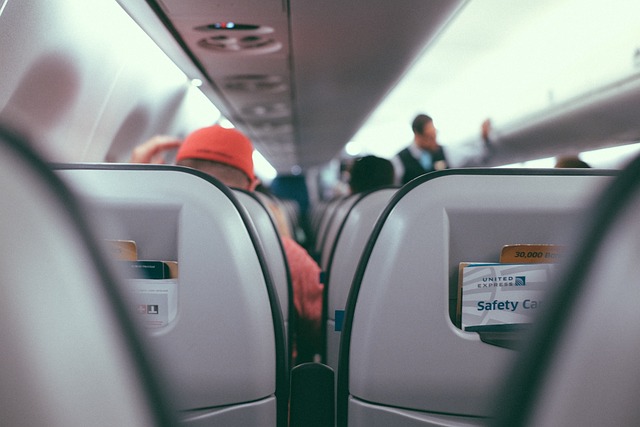Assistance dogs are trained to provide support and assistance to people with disabilities. These dogs are specially trained to help their owners in a variety of ways, from assisting with mobility to providing emotional support. In the UK, there are several types of assistance dogs that are recognized and trained to perform specific tasks. In this article, we will explore the different types of assistance dogs in the UK and their roles.
Guide Dogs
Guide dogs are one of the most well-known types of assistance dogs in the UK. These dogs are trained to guide people who are visually impaired or blind. They help their owners navigate through streets, cross roads, avoid obstacles, and find specific locations. Guide dogs are trained to stop at curbs and steps, locate doors and seats, and follow directional commands.
There are several different breeds of dogs that are commonly used as guide dogs, including Labrador Retrievers, Golden Retrievers, and German Shepherds. However, other breeds, such as Poodles and Boxers, are also used.
Guide dogs are highly intelligent and capable animals that must pass extensive training and testing before they are matched with a handler. The training process typically takes between 18 and 24 months and involves a variety of different skills and behaviours, including obedience training, socialisation, and intensive guide work.
Once a guide dog has been fully trained, they are matched with a handler based on a number of factors, including the handler's lifestyle, needs, and personality. Handlers are also trained in how to work with their guide dogs and how to take care of them.
One of the key benefits of having a guide dog is that it can greatly enhance the mobility and independence of people who are blind or visually impaired. With the help of a guide dog, they are able to move around more easily and confidently, allowing them to participate more fully in daily activities such as work, school, and socialising.
However, it's important to note that guide dogs are not suitable for everyone who is blind or visually impaired. Some people may prefer to use a cane or other mobility aid, while others may not be able to take on the responsibility of caring for a guide dog.
Hearing Dogs
Hearing dogs are trained to assist people who are deaf or hard of hearing. These dogs are trained to alert their owners to specific sounds such as doorbells, alarms, and smoke detectors. They also provide emotional support and companionship to their owners.
Hearing dogs, also known as hearing assistance dogs or signal dogs, are specially trained dogs that assist people who are deaf or hard of hearing. These dogs are trained to alert their handlers to sounds such as doorbells, telephones, smoke alarms, and other important sounds that the handler may not be able to hear on their own.
Hearing dogs are typically trained to make physical contact with their handlers when they detect a sound, either by nudging their leg or pawing at them. They may also lead their handlers to the source of the sound or perform other actions as needed. For example, if the smoke alarm goes off, the dog may alert the handler and then lead them to safety.
To become a hearing dog, a dog must first pass a series of temperament and behavior tests to ensure that they have the right disposition for the job. They must be calm, patient, and well-behaved in a variety of situations, including around other animals and people.
Once a dog has been deemed suitable for hearing dog training, they will undergo specialized training to learn how to recognize and respond to different sounds. They may also receive obedience training to ensure that they are well-behaved in public and can work effectively with their handler.
Hearing dogs can be an invaluable tool for people who are deaf or hard of hearing, allowing them to live more independently and with greater peace of mind. In addition to alerting their handlers to important sounds, hearing dogs can also provide emotional support and companionship, helping to reduce feelings of isolation and loneliness.
Mobility Assistance Dogs
Mobility assistance dogs are trained to provide support and assistance to people with mobility impairments. These dogs are trained to help with tasks such as opening and closing doors, retrieving items, and providing balance and stability. They can also assist with tasks such as getting up from a seated position and walking up and down stairs.
Mobility Assistance Dogs are specially trained service animals that provide physical assistance to people with disabilities, helping them to perform daily tasks and live more independently. These dogs are highly trained to perform a wide range of tasks, such as picking up dropped items, opening doors, turning on lights, and retrieving items from shelves or counters. They can also help with balance and stability while walking or standing, and provide support when transferring from a wheelchair or other mobility device.
Mobility Assistance Dogs can be trained to assist people with a variety of disabilities, including but not limited to:
• Mobility impairments: such as spinal cord injuries, cerebral palsy, muscular dystrophy, and multiple sclerosis.
• Neurological disorders: such as Parkinson's disease, stroke, and traumatic brain injury.
• Visual impairments: such as blindness or low vision.
• Other disabilities: such as chronic pain, arthritis, and chronic fatigue syndrome.
To become a Mobility Assistance Dog, a dog must undergo extensive training to learn the specific tasks needed to assist their owner. These dogs are trained using positive reinforcement techniques, and are often trained by professional dog trainers or through assistance dog programs.
Mobility Assistance Dogs come in all shapes and sizes, but most commonly are medium to large breeds such as Labrador Retrievers, Golden Retrievers, and German Shepherds. These breeds are chosen for their intelligence, loyalty, and ability to learn complex tasks quickly.
In addition to providing physical assistance, Mobility Assistance Dogs also provide emotional support and companionship to their owners. Many people with disabilities struggle with feelings of isolation and loneliness, and having a loyal and loving companion can make a significant difference in their quality of life.
Medical Alert Dogs
Medical alert dogs are trained to detect and respond to specific medical conditions. For example, some dogs are trained to detect changes in blood sugar levels and alert their owners to take action. Other dogs are trained to detect seizures and provide assistance to their owners during and after a seizure.
Medical Alert Dogs, also known as Medical Detection Dogs, are service animals trained to detect changes in their owner's body that signal a medical emergency. These dogs are highly skilled at detecting subtle changes in body odor or behavior, and can alert their owners or caregivers to a potential medical issue before it becomes serious.
Medical Alert Dogs can be trained to detect a wide range of medical conditions, including but not limited to:
• Diabetes: These dogs can detect changes in their owner's blood sugar levels, alerting them when they need to take insulin or adjust their diet.
• Seizures: These dogs can sense when their owner is about to have a seizure and alert them or others nearby, providing support during the episode.
• Allergies: These dogs can detect the presence of allergens, such as peanuts or gluten, and alert their owners to avoid them.
• Migraines: These dogs can sense changes in their owner's body that indicate an impending migraine and alert them to take medication or seek treatment.
• Heart conditions: These dogs can detect changes in their owner's heart rate or blood pressure and alert them to take medication or seek medical attention.
To become a Medical Alert Dog, a dog must undergo extensive training to learn how to detect changes in their owner's body and alert them appropriately. This training typically involves a combination of scent detection, obedience training, and specialized medical alert training.
Medical Alert Dogs come in all shapes and sizes, but most commonly are medium to large breeds such as Labrador Retrievers, Golden Retrievers, and German Shepherds. These breeds are chosen for their intelligence, loyalty, and ability to learn complex tasks quickly.
Psychiatric Assistance Dogs
Psychiatric assistance dogs are trained to provide support and assistance to people with psychiatric disabilities. These dogs can help with tasks such as reminding their owners to take medication, providing emotional support during times of stress or anxiety, and alerting their owners to signs of a panic attack.
Psychiatric Assistance Dogs can be trained to assist people with a variety of psychiatric disabilities, including but not limited to:
• Anxiety disorders: such as generalized anxiety disorder, social anxiety disorder, and panic disorder.
• Mood disorders: such as depression and bipolar disorder.
• Post-traumatic stress disorder (PTSD): which can occur after experiencing a traumatic event.
• Obsessive-compulsive disorder (OCD): which involves obsessive thoughts and compulsive behaviors.
To become a Psychiatric Assistance Dog, a dog must undergo extensive training to learn the specific tasks needed to assist their owner. These dogs are trained using positive reinforcement techniques, and are often trained by professional dog trainers or through assistance dog programs.
Tasks that Psychiatric Assistance Dogs can be trained to perform include:
• Deep pressure therapy: where the dog leans or lays on their owner to provide comfort and reduce anxiety.
• Interrupting repetitive behaviors: such as pawing or nudging their owner to stop them from engaging in compulsive behaviors.
• Retrieving medication: such as a pill bottle, or bringing water or other items to their owner.
• Providing tactile stimulation: such as licking their owner's hand or providing a paw to hold onto during a panic attack.
• Providing grounding and anchoring: where the dog physically leans against or provides pressure to their owner to help them feel more grounded and anchored in the present moment.
Roles of Assistance Dogs
Assistance dogs play a vital role in the lives of their owners. They provide not only physical assistance but also emotional support and companionship. These dogs are trained to perform specific tasks to help their owners live more independently and improve their quality of life.
Assistance dogs can help their owners in many ways, including:
- Improving mobility and independence
- Providing emotional support and companionship
- Alerting their owners to specific sounds or medical conditions
- Reminding their owners to take medication
- Providing stability and balance
- Assisting with daily tasks such as opening doors and retrieving items
- Helping their owners navigate public spaces
How to Get an Assistance Dog in the UK
Getting an assistance dog in the UK involves several steps. The first step is to determine whether you meet the eligibility criteria for an assistance dog. In general, you must have a disability that affects your ability to perform daily tasks or navigate public spaces.
The next step is to research different organizations that provide assistance dogs. These organizations may have different eligibility criteria, training programs, and waiting periods. You can also speak to your doctor or healthcare provider for recommendations on organizations to contact.
Once you have identified an organization, you will typically need to complete an application and provide medical documentation of your disability. The organization will then evaluate your application and determine whether you are a good candidate for an assistance dog.
If you are accepted into the program, you will be placed on a waiting list until a suitable dog becomes available. You will then go through a training program with your new assistance dog to learn how to work together effectively.
Conclusion
Assistance dogs play a critical role in the lives of their owners. These dogs are trained to provide support and assistance to people with disabilities, improving their mobility, independence, and quality of life. If you or someone you know could benefit from the assistance of an assistance dog, it is important to do your research and find a reputable organization that offers the services you need. With hard work and dedication, owning a service dog can be an immensely rewarding experience!













